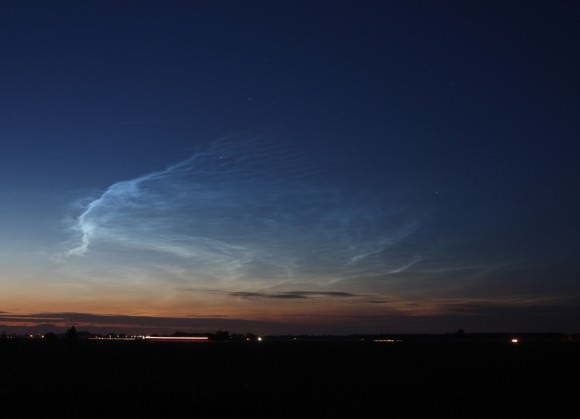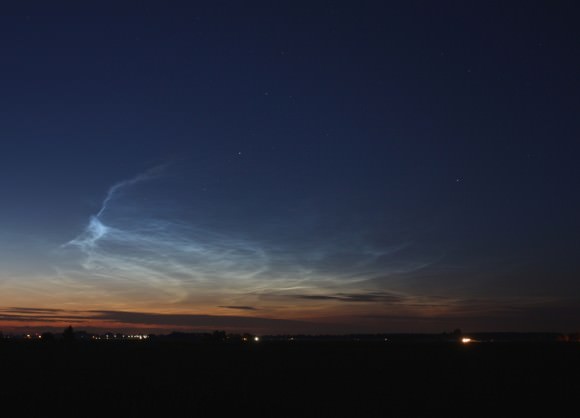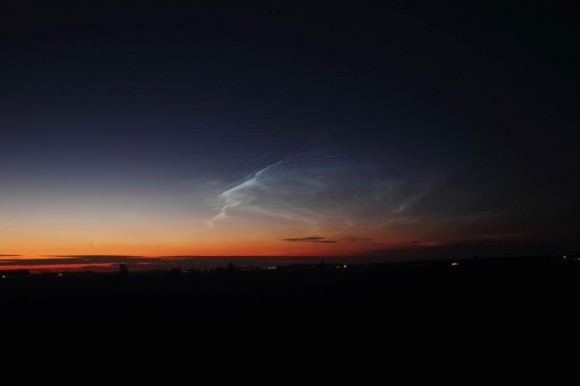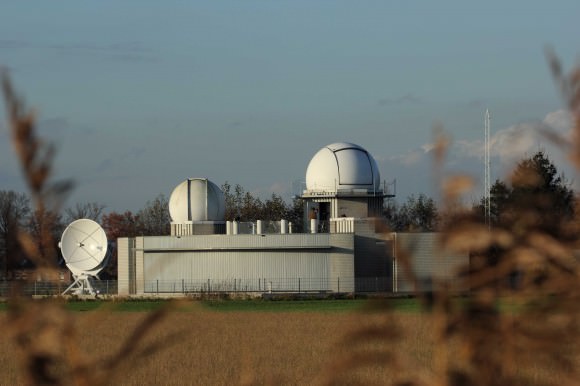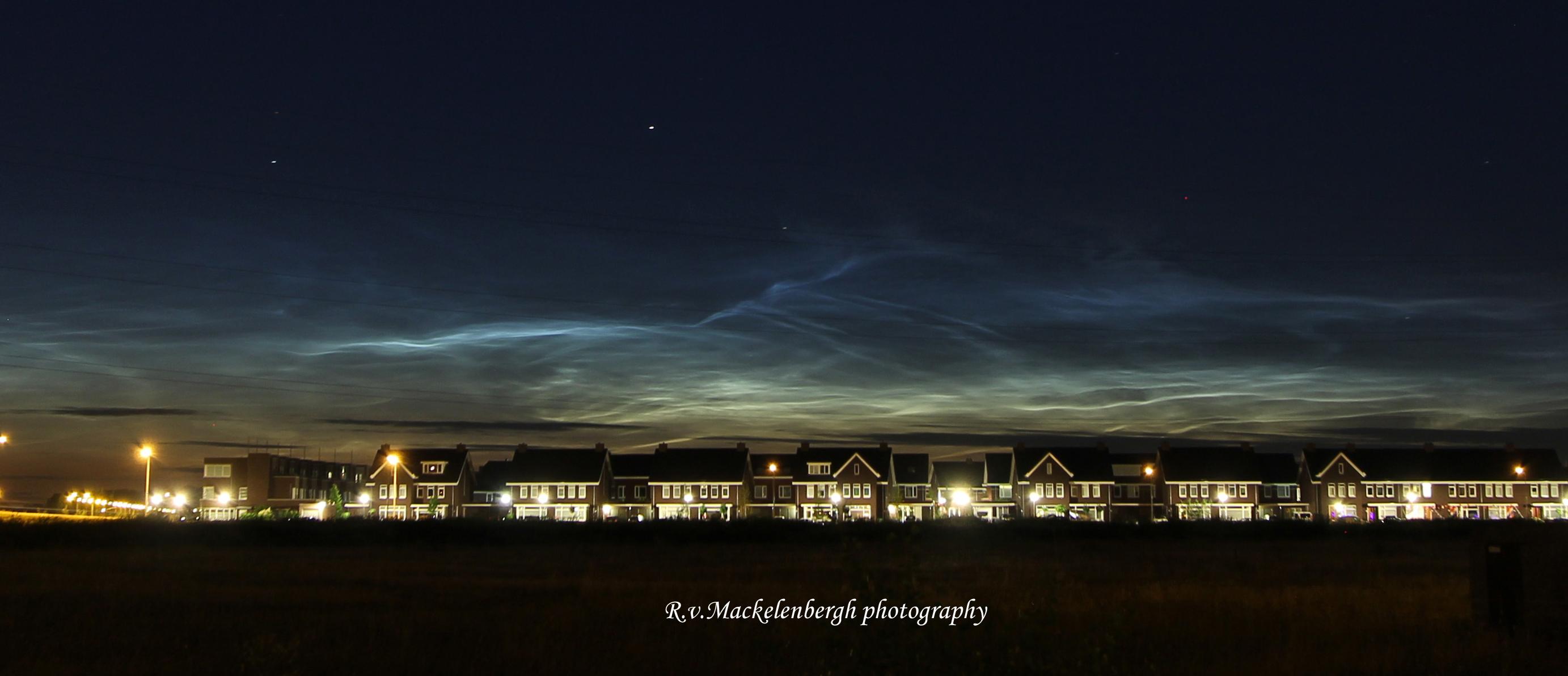A trio of talented Dutch astrophotographers have captured a series of magnificent views of the rare and beautiful phenomena known as Noctilucent Clouds, or NLCs, during a spectacular outburst on the night of July 3, 2014 in the dark skies over southern Holland – coincidentally coinciding with the fireworks displays of the Dutch 2014 FIFA World Cup team and America’s 4th of July Independence Day celebrations!
“I suddenly saw them above my city on the night of July 3rd and ran for my camera!” said Dutch astrophotographer Rob van Mackelenbergh, who lives in the city of Rosmalen and excitedly emailed me his photos – see above and below.
“I was lucky to see them because I left work early.”
Noctilucent clouds are rather mysterious and often described as “alien looking” with “electric-blue ripples and pale tendrils reaching across the night sky resembling something from another world,” according to a NASA description.
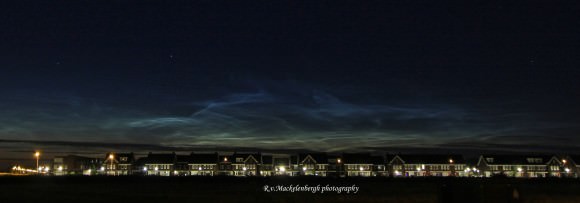
They are Earth’s highest clouds, forming on tiny crystals of water ice and dust particles high in the mesosphere near the edge of space by a process known as nucleation, at altitudes of about 76 to 85 kilometers (47 to 53 miles).
NLCs are generally only visible on rare occasions in the late spring to summer months in the hours after sunset and at high latitudes – 50° to 70° north and south of the equator.
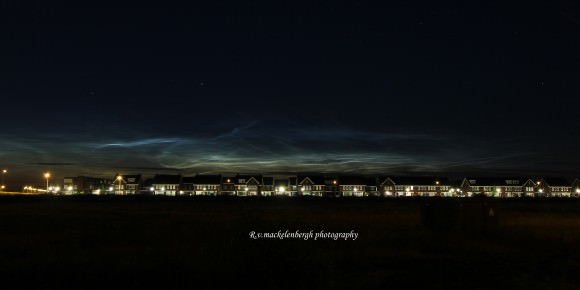
Another pair of Dutch guys, Raymond Westheim and Edwin van Schijndel, quickly hit the road to find a clear view when they likewise saw the mesmerizingly colorful and richly hued outburst on July 3rd and also sent me their fabulous NLC photos.
“To have a free view to the horizon, we drove to the countryside just north of the city of Oss. On a small road we have stopped to witness these beautiful NLCs and to take pictures,” said Westheim.
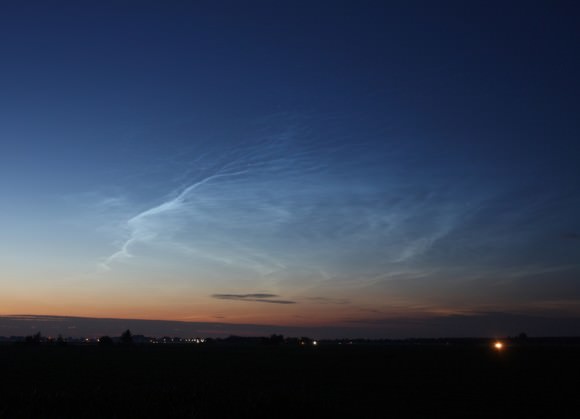
See a gallery of Raymond’s and Edwin’s photos herein.
“The NLCs of last night were the most beautiful ones since 2010. They were remarkably bright and rapidly changing and could be seen drifting towards the South,” Westheim explained with glee.
“These pictures were taken a few kilometers north of our city Oss between 23:15 p.m. and 0:15 a.m. (Central Europe Time) on Thursday evening, July 3,” said Edwin van Schijndel.
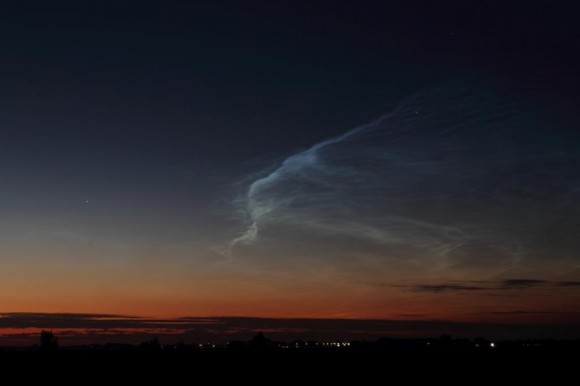
Rob, Raymond and Edwin are all members of the “Sterrenwacht Halley” Observatory which was built in 1987. It houses a planetarium and a Celestron C14 Schmidt-Cassegrain telescope. The observatory is located about 50 kilometers from the border with Belgium, near Den Bosch – the capitol city of southern Holland. The well known club hosts astronomy lectures and star parties to educate the public about astronomy and science.
The spectacular NLC sky show is apparently visible across Europe. Spaceweather.com has received NLC reports “from France, Germany, Poland, the Netherlands, Scotland, Ireland, England, Estonia and Belgium.”
Here are some additional NLC Observing Tips from NASA:
NLC Observing tips: Look west 30 to 60 minutes after sunset when the Sun has dipped 6 degrees to 16 degrees below the horizon. If you see luminous blue-white tendrils spreading across the sky, you’ve probably spotted a noctilucent cloud. Although noctilucent clouds appear most often at arctic latitudes, they have been sighted in recent years as far south as Colorado, Utah and Nebraska. NLCs are seasonal, appearing most often in late spring and summer. In the northern hemisphere, the best time to look would be between mid-May and the end of August.
The first reported sighting of NLC’s are relatively recent in 1885 by a German astronomer named T.W. Backhouse, some two years after the enormous eruption of the Krakatoa Volcano in 1883 that wreaked enormous death and destruction and which may or may not be related.
Over the past few years, astronaut crews aboard the ISS have also photographed splendid NLC imagery from low Earth orbit.
Stay tuned here for Ken’s continuing OCO-2, GPM, Curiosity, Opportunity, Orion, SpaceX, Boeing, Orbital Sciences, MAVEN, MOM, Mars and more Earth & Planetary science and human spaceflight news.
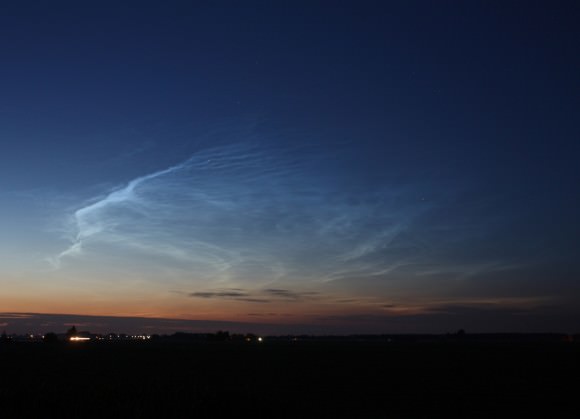
…………….
Learn more about NASA’s Mars missions and Orbital Sciences Antares ISS launch on July 11 from NASA Wallops, VA in July and more about SpaceX, Boeing and commercial space and more at Ken’s upcoming presentations.
July 10/11: “Antares/Cygnus ISS Launch from Virginia” & “Space mission updates”; Rodeway Inn, Chincoteague, VA, evening
